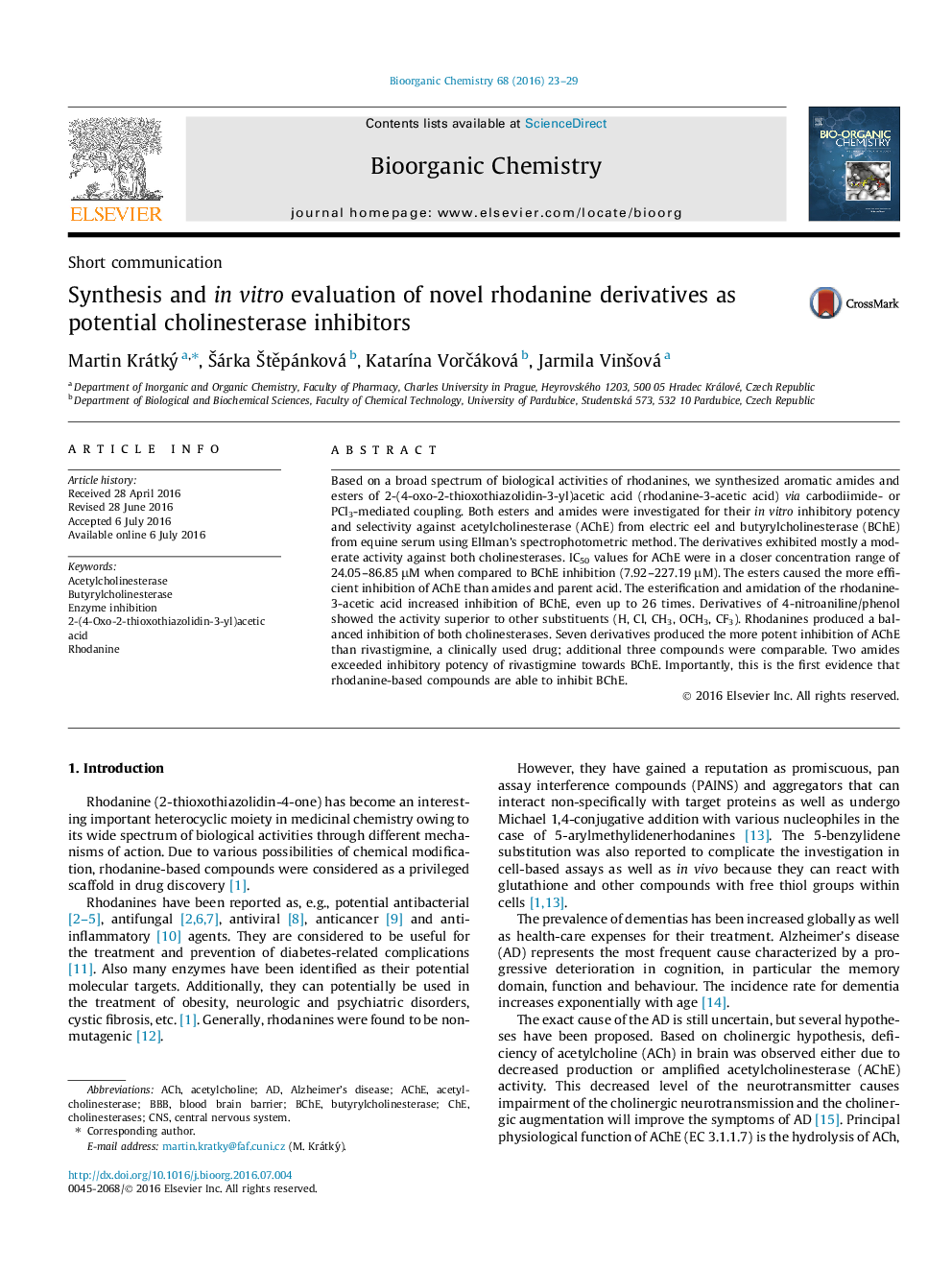| Article ID | Journal | Published Year | Pages | File Type |
|---|---|---|---|---|
| 1355575 | Bioorganic Chemistry | 2016 | 7 Pages |
•Esters and amides of rhodanine-3-acetic acid inhibit cholinesterases.•IC50 values from 7.92 μM.•Rhodanines produce balanced inhibition of butyrylcholinesterase and acetylcholinesterase.•The most active inhibitors were derivatives of 4-nitroaniline/phenol.
Based on a broad spectrum of biological activities of rhodanines, we synthesized aromatic amides and esters of 2-(4-oxo-2-thioxothiazolidin-3-yl)acetic acid (rhodanine-3-acetic acid) via carbodiimide- or PCl3-mediated coupling. Both esters and amides were investigated for their in vitro inhibitory potency and selectivity against acetylcholinesterase (AChE) from electric eel and butyrylcholinesterase (BChE) from equine serum using Ellman’s spectrophotometric method. The derivatives exhibited mostly a moderate activity against both cholinesterases. IC50 values for AChE were in a closer concentration range of 24.05–86.85 μM when compared to BChE inhibition (7.92–227.19 μM). The esters caused the more efficient inhibition of AChE than amides and parent acid. The esterification and amidation of the rhodanine-3-acetic acid increased inhibition of BChE, even up to 26 times. Derivatives of 4-nitroaniline/phenol showed the activity superior to other substituents (H, Cl, CH3, OCH3, CF3). Rhodanines produced a balanced inhibition of both cholinesterases. Seven derivatives produced the more potent inhibition of AChE than rivastigmine, a clinically used drug; additional three compounds were comparable. Two amides exceeded inhibitory potency of rivastigmine towards BChE. Importantly, this is the first evidence that rhodanine-based compounds are able to inhibit BChE.
Graphical abstractFigure optionsDownload full-size imageDownload as PowerPoint slide
